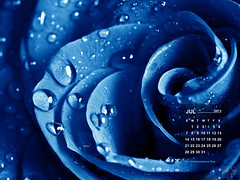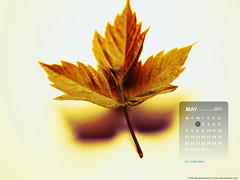Eleven Things That NASA Discovered About The Moon
“That You Never Knew”

Moon Landing Map
Read this remark below
“It seems much easier to explain the nonexistence of the moon than its existence.”
NASA Scientist Dr. Robin Brett
1. The Puzzle of the Moon’s Origin: Scientists have generally offered three major theories to account for the moon in orbit around our planet. All three are in serious trouble, but the least likely theory emerged from the Apollo missions as the favorite theory. One theory was that the moon might have been born alongside the earth out of the same cosmic cloud of gas dust about 4.6 billion years ago. Another theory was that the moon was the earth’s child, ripped out the Pacific basin, possibly. Evidence gathered by the Apollo program indicates though that the moon and the earth differ greatly in composition. Scientists now tend to lean toward the third theory- that the moon was “captured” by the earth’s gravitational field and locked into orbit ages ago. Opponents of the theory point to the immensely difficult celestial mechanics involved in such a capture. All of the theories are in doubt, and none satisfactory. NASA scientist Dr. Robin Brett sums it up best: “It seems much easier to explain the nonexistence of the moon than its existence.”

NASA lab photo of Lunar Sample 61016, better known as , the largest rock returned from the Moon during the Apollo program. This rock, a , was discovered and collected on Apollo 16.
2. The Puzzle of the Moon’s Age: Incredibly, over 99 percent of the moon rocks brought back turned out upon analysis to be older than 90 percent of the oldest rocks that can be found on earth. The first rock Neil Armstrong picked up after landing on the Sea of Tranquility turned out to be more than 3.6 billion years old. Other rocks turned out to be even older; 4.3, 4.5, 4.6, and one even alleged to be 5.3 billion years old! The oldest rocks found on earth are about 3.7 billion years old, and the area that the moon rocks came from was thought by scientists to be one of the youngest areas of the moon! Based on such evidence, some scientists have concluded that the moon was formed among the stars long before our sun was born.

Lunar Ferroan Anorthosite(Plagioclase Feldspar).
Collected by Apollo 16 from the Lunar Highlands near Descartes Crater. This sample is currently on display at the National Museum of Natural History in Washington, DC. Plaque states: At 4.5 billion years old, this anorthosite is approximately the same age as the Moon itself. Made mostly of plagioclase feldspar, it is thought to be a sample of the Moon’s early feldspar crust.
3. The Puzzle Of How Moon Soil Could Be Older Than Lunar Rocks: The mystery of the age of the Moon is even more perplexing when rocks taken from the Sea of Tranquillity were young compared to the soil on which they rested. Upon analysis, the soil proved to be at least a billion years older. This would appear immpossible, since the soil was powdered remains of the rocks lying alongside it. Chemical analysis of the soil revealed that the lunar soil did not come from the rocks, but from somewhere else.
4. The Puzzle of Why the Moon “Rings” like a Hollow Sphere When a Large Object Hits It: During the Apollo Moon missions, ascent stages of lunar modules as well as the spent third stages of rockets crashed on the hard surface of the moon. Each time, these caused the moon, according to NASA, to “ring like a gong or a bell.” On one of the Apollo 12 flights, reverberations lasted from nearly an hour to as much as four hours. NASA is reluctant to suggest that the moon may actually be hollow, but can otherwise not explain this strange fact.
5. The Puzzle of the Mystifying Maria of the Moon: The dark areas of the moon are known as maria (seas, as this is what they looked like to early astronomers- dried-up seas). Some of these maria form the familiar “man-in-the-moon” and are strangely, located almost entirely on one side of the moon. Astronauts found it extremely difficult to drill into the surface of these dark plainlike areas. Soil samples were loaded with rear metals and elements like titanium, zirconium, yttrium, and beryllium. This dumbfounded scientists because these elements require tremendous heat, approximately 4,500 degrees Fahrenheit, to melt and fuse with surrounding rock, as it had.
6. The Puzzle of the Rustproof Iron Found on the Moon: Samples brought back to earth by both Soviet and American space probes contain pure iron particles. The Soviets announced that pure iron particles brought back by remote controlled lunar probe Zond 20 have not oxidized even after several years on earth. Pure iron particles that do not rust are unheard of in the scientific world (although there is a solid iron pillar of unknown age in New Delhi, India, that has also never rusted, and no one knows why).
7. The Puzzle of the Moon’s High Radioactivity: Apparently, the upper 8 miles of the moon’s crust are surprisingly radioactive. When Apollo 15 astronauts used thermal equipment, they got unusually high readings, which indicated that the heat flow near the Apennine Mountains was rather hot. In fact, one lunar expert confessed: “When we saw that we said, ‘My God, this place is about to melt! The core must be very hot.’ ” But that is the puzzle. The core is not hot at all, but cold (in fact, as was assumed, it is a hollow sphere). The amount of radioactive materials on the surface is not only “embarrassingly high” but, difficult to account for. Where did all this hot radioactive material (uranium, thorium, and potassium) come from? And if it came from the interior of the moon (unlikely), how did it get to the moon’s surface?

Close-up of the orange soil discovered on the Apollo 17 mission in 1972. The color is caused by microscopic glass beads created by volcanic processes earlier in the Moon’s history
8. The Puzzle of the Immense Clouds of Water Vapor on the Dry Moon: The few lunar excursions indicated that the moon was a very dry world. One lunar expert said that it was “a million times as dry as the Gobi Desert.” The early Apollo missions did not find even the slightest trace of water. But after Apollo 15, NASA experts were stunned when a cloud of water vapor more than 100 square miles in size was detected on the moon’s surface. Red-faced scientists suggested that two tiny tanks, abandoned on the moon by U.S. astronauts, had somehow ruptured. But the tanks could not have produced a cloud of such magnitude. Nor would the astronauts’ urine, which had been dumped into the lunar skies, be an answer. The water vapor appears to have come from the moon’s interior, according to NASA. Mists, clouds and surface changes have allegedly been seen on the moon over the years by astronomers. For instance, six astronomers in the last century have claimed to have seen a mist which obscured details in the floor of the crater Plato. Clouds on the moon are extremely odd, because the moon’s supposed small gravity (one sixth of the earth’s, claim many conventional scientists and NASA) could not hold an atmosphere or have any clouds on it at all.
9. The Puzzle of the Glassy Surface on the Moon: Lunar explorations have revealed that much of the moon’s surface is covered with a glassy glaze, which indicates that the moon’s surface has been scorched by an unknown source of intense heat. As one scientist put it, the moon is “paved with glass.” The experts’ analysis shows this did not result from massive meteor impactings. One explanation forwarded was that an intense solar flare, of awesome proportions, scorched the moon some 30,000 years or so ago. Scientists have remarked that the glassy glaze is not unlike that created by atomic weapons (the high radiation of the moon should also be considered in light of this theory).
10. The Puzzle of the Moon’s Strange Magnetism: Early lunar tests and studies indicated that the moon had little or no magnetic field. Then lunar rocks proved upon analysis to be strongly magnetized. This was shocking to scientists who had always assumed that the rocks had “some very strange magnetic properties…which were not expected.” NASA can not explain where this magnetic field came from.
11. The Puzzle of the Mysterious “Mascons” Inside the Moon: In 1968, tracking data of the lunar orbiters first indicated that massive concentrations (mascons) existed under the surface of the circular maria. NASA even reported that the gravitational pull caused by them was so pronounced that the spacecraft passing overhead dipped slightly and accelerated when flitting by the circular lunar plains, thus revealing the existence of these hidden structures, whatever they were. Scientists have calculated that they are enormous concentrations of dense, heavy matter centered like a bull’s-eye under the circular maria. As one scientist put it, “No one seems to know quite what to do with them.”
The above excerpts are taken from Research scientist and author D. Hatcher Childress’s investigative books.
Related articles
- Mars Mystery..Shanepedia
- Were we already on the moon in 2309 B.C ..shanepedia
- NASA Wants to Give Our Moon Its Own Moon (motherboard.vice.com)
- 40 years of waiting (eatlogicalsentences.com)
- Nasa crashes twin probes into moon (guardian.co.uk)
- NASA names moon crash site in honor of Sally Ride (miamiherald.com)
- Mars colony..shanepedia
https://shanepedia.wordpress.com
Shanepedia.archives@gmail.com
Along with thanks and compliments to the sources for the shared data
Creative Commons Copyright © Shanepedia 2012




















is it possible ? Can any planet be hollow.. i dont think.. the gong sound may be because the moon is empty..totally empty.. no structures, no living beings, no water or oceans, rivers, lakes , forests and no atmosphere.. all these things works also as sound absorbers on earth.
LikeLike
Are these the true revelations,,?
LikeLike
Nasa’s projects and intentions are most of the time mysterious.. but their aim and objectives are always the same..” To defy God”.
LikeLike
great review here anyway thanks for posting a valuable one again… lista de email lista de email lista de email lista de email lista de email
LikeLike
You have very nice blog here. Only one thing what I noticed, it was very hard to find it from google (at least with my search term). You should use plugin like that: http://bit.ly/11UpQn2 It will get you better ranking in google. I use it all my wp blogs.If you have any problems to use it, just send me email and I try to help. Another good one what you should check is: http://bit.ly/13T2ILb
LikeLike
NASA and it’s Modus Operandi…
Really though, if we did learn it to be a fact,
I wouldn’t be the least bit surprised.
LikeLike
I believe this website has got some very wonderful information for everyone. “The fewer the words, the better the prayer.” by Martin Luther.
LikeLike